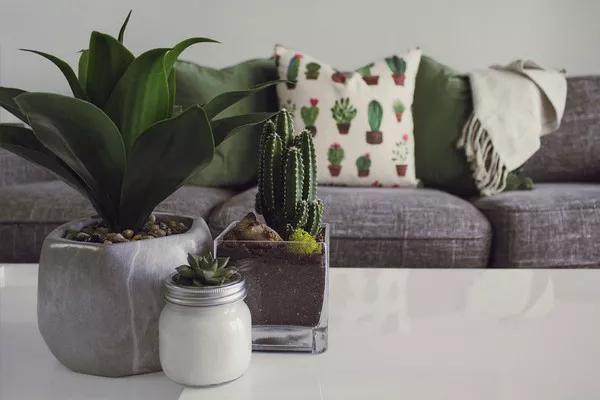Succulents, with their captivating forms and vibrant colors, bring a touch of natural elegance to gardens and landscapes. Planting succulents in the ground offers a unique opportunity to integrate these resilient plants into outdoor spaces, creating visually appealing and low-maintenance garden beds. In this comprehensive guide, we will explore the step-by-step process of planting succulents in the ground, covering essential considerations for successful cultivation and long-term enjoyment of these delightful plants.
Choosing the Right Location
The first step in planting succulents in the ground is selecting the right location. Succulents thrive in well-draining soil and require ample sunlight to flourish. Choose a spot in your garden or landscape that receives at least six hours of direct sunlight daily. Additionally, ensure that the soil in the chosen area is well-draining, as succulents are susceptible to root rot in overly damp conditions. Elevated beds or sloped terrain can be particularly suitable for creating well-drained environments for succulent planting.
Preparing the Soil
Succulents prefer soil with excellent drainage to prevent waterlogged roots. Prepare the soil in the chosen area by incorporating a gritty, well-draining mix. Combine standard garden soil with perlite, coarse sand, or pumice to enhance drainage and aeration. Amending the soil before planting succulents ensures that they receive the optimal growing conditions, preventing issues associated with excessive moisture retention.
Planting Succulents
When planting succulents in the ground, space them appropriately to allow for their mature size and to prevent overcrowding. Dig a hole for each succulent that is slightly larger than its root ball. Gently remove the succulent from its container, loosen the roots, and place it in the prepared hole. Backfill with the amended soil, ensuring that the plant sits at the same depth as it did in the container. Firmly press the soil around the succulent to provide stability and eliminate air pockets.
See Also: How to propagate stonecrop succulent?
Watering Considerations
Watering is a critical aspect of establishing succulents in the ground. While succulents are known for their water-storing capabilities, they still require consistent moisture during the initial planting period to establish strong root systems. Water the newly planted succulents thoroughly, allowing the soil to absorb moisture around the roots. Subsequently, adopt a “soak and dry” approach, allowing the soil to dry out completely between watering sessions. Be mindful of reducing watering during dormant periods or in the winter months when succulents experience slower growth.
Mulching for Moisture Retention
Applying a layer of mulch around succulents in the ground helps retain soil moisture, regulate temperature, and suppress weeds. Use a well-draining mulch material such as gravel, small stones, or crushed shells to avoid creating excessively damp conditions. Mulching also provides a protective barrier for succulent roots and enhances the overall aesthetic appeal of the garden bed.
Fertilizing Succulents in the Ground
Succulents generally do not require heavy fertilization, but providing some nutrients can support their overall health and vitality. Use a balanced, diluted succulent fertilizer during the growing season, typically in spring and early summer. Apply the fertilizer sparingly, following the recommended guidelines on the product packaging. Avoid excessive fertilization, as succulents are adapted to thrive in nutrient-poor soils.
Designing with Variety
One of the beauties of planting succulents in the ground is the opportunity to design with variety. Explore different succulent species and varieties to create a visually dynamic and diverse garden bed. Combine rosette-forming succulents with trailing varieties, and experiment with varied colors, textures, and shapes. The combination of different succulent forms adds interest to the garden bed and allows for creative expression.
Protecting from Extreme Conditions
While succulents are known for their resilience, extreme weather conditions can pose challenges. In regions with harsh winters, protecting succulents from frost is crucial. Covering them with frost cloth or moving potted succulents indoors during cold spells can prevent damage. Conversely, in scorching summer temperatures, providing some shade during the hottest part of the day can protect succulents from sunburn.
Pruning and Maintenance
Regular maintenance, including pruning and monitoring for pests or diseases, contributes to the long-term health of succulents planted in the ground. Remove dead or damaged leaves to encourage air circulation and prevent the spread of disease. Trim overgrown or leggy succulents to maintain a tidy appearance and promote compact growth. Regular inspections allow for timely intervention, ensuring the sustained beauty of the succulent garden bed.
Arranging with Landscape Elements
Integrating succulents into the overall landscape design involves considering surrounding elements. Plant succulents near rocks, boulders, or other landscape features to create a seamless and harmonious transition. Succulents with unique shapes and colors can serve as focal points or accents within the garden bed. Consider the overall aesthetics of your landscape and use succulents to enhance the visual appeal of your outdoor space.
Expanding Over Time
Planting succulents in the ground offers the advantage of expansion over time. As succulents mature and produce offsets or pups, you can propagate new plants and incorporate them into the existing garden bed. This gradual expansion allows for a dynamic and evolving succulent landscape. Additionally, experimenting with different succulent varieties and arrangements over time adds an element of discovery and creativity to your gardening experience.
Conclusion
Planting succulents in the ground is a rewarding endeavor that brings the beauty of these resilient plants to outdoor spaces. By carefully selecting the right location, preparing well-draining soil, and providing proper care, you can create a thriving succulent garden bed. The diverse colors, forms, and textures of succulents offer endless possibilities for creative expression in landscape design. Whether enhancing existing garden beds or creating dedicated succulent spaces, the process of planting succulents in the ground invites nature’s elegance into your outdoor environment.


